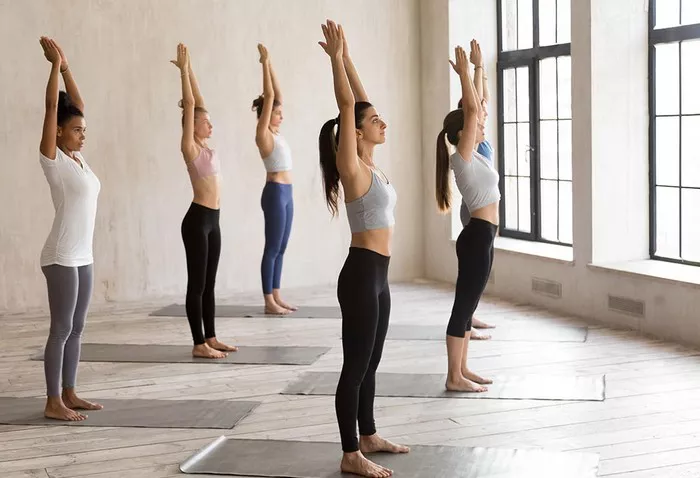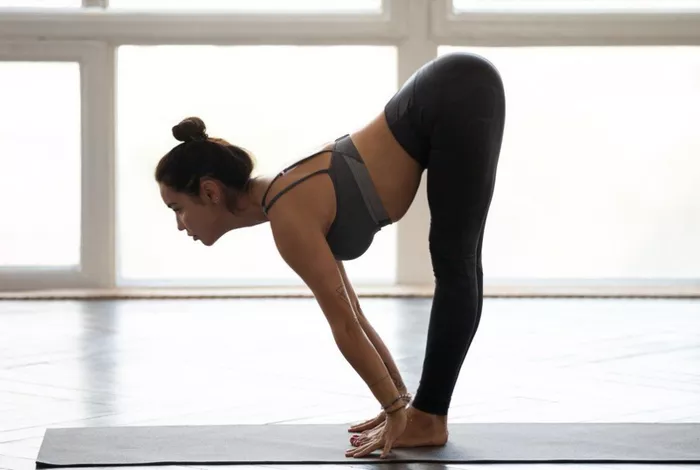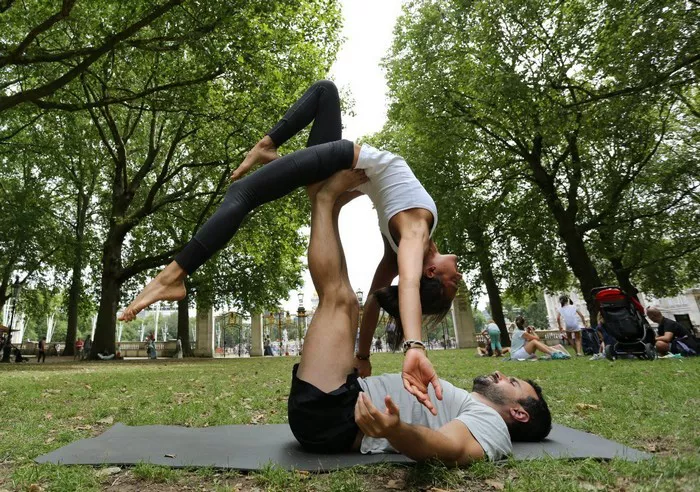Iyengar Yoga is a style of yoga developed by B.K.S. Iyengar, one of the foremost yoga teachers of the 20th century. Known for its emphasis on precision, alignment, and the use of props, Iyengar Yoga is a form of Hatha Yoga that prioritizes the quality of movement over quantity. It appeals to both beginners and advanced practitioners because of its structured and disciplined approach. Whether you’re recovering from an injury or looking to deepen your practice, Iyengar Yoga offers a safe and accessible path to physical and mental well-being.
Historical Background of Iyengar Yoga Style
B.K.S. Iyengar began developing this unique style of yoga in the early 20th century after a childhood marked by illness. Under the guidance of his brother-in-law and yoga master Krishnamacharya, Iyengar honed his skills and began to adapt traditional asanas (postures) to meet the needs of a wider range of students. In 1966, his book “Light on Yoga” became a seminal text, bringing the practice to a global audience. Over time, Iyengar refined his methodology, emphasizing detail, safety, and therapeutic benefit, setting the foundation for what is now recognized as Iyengar Yoga.
Core Principles of Iyengar Yoga
1. Precision and Alignment
The hallmark of Iyengar Yoga is its focus on alignment. Every posture is taught with close attention to the correct positioning of bones and muscles, ensuring that the body is in its most efficient and safe form. This precision helps practitioners avoid injury and develop a deeper awareness of their physical form.
2. Use of Props
Iyengar Yoga popularized the use of props such as blocks, straps, bolsters, and blankets. These tools enable practitioners to perform poses correctly regardless of their level of flexibility or strength. Props also make yoga accessible to the elderly, injured, or those with physical limitations.
3. Sequencing
Poses are arranged in a thoughtful sequence to bring about specific physical or mental benefits. An Iyengar sequence might start with standing poses to build strength and end with restorative poses to calm the nervous system. This sequencing helps the body move through a logical progression.
4. Timing
In Iyengar Yoga, practitioners hold poses for extended periods, sometimes for several minutes. This approach builds strength and endurance, and allows for greater introspection and focus on the finer aspects of the posture.
Benefits of Iyengar Yoga
Practicing Iyengar Yoga regularly offers a range of physical and mental benefits:
- Improved Posture and Alignment: Through consistent attention to detail, students improve body awareness and alignment, which can reduce chronic pain and improve overall posture.
- Increased Flexibility: Props and prolonged holds enable even beginners to experience deeper stretches safely.
- Enhanced Strength and Stability: Holding poses longer develops muscular endurance and joint stability.
- Better Concentration and Focus: The detailed nature of the practice demands mental engagement, fostering mindfulness and reducing stress.
- Therapeutic Effects: Iyengar Yoga is often used to support healing from injuries and chronic conditions like arthritis, scoliosis, and hypertension.
Commonly Used Props in Iyengar Yoga
The thoughtful integration of props is one of the defining characteristics of Iyengar Yoga. These tools serve multiple purposes and are crucial to the practice:
- Blocks – Used to bring the ground closer in standing poses, support the spine in seated poses, and assist balance.
- Straps – Help deepen stretches and improve alignment, especially in poses where hands or feet can’t meet easily.
- Bolsters – Provide support in restorative poses and help maintain comfort during long holds.
- Blankets – Used for cushioning joints, supporting the neck, or elevating the hips.
- Chairs – Employed in therapeutic sequences or to make certain poses more accessible.
By incorporating these props, Iyengar Yoga ensures that each posture is performed safely and correctly, regardless of a student’s limitations.
Structure of an Iyengar Yoga Class
A typical Iyengar Yoga class follows a clear structure designed to support learning and progression. Classes are usually divided by level (beginner, intermediate, advanced) and may focus on a specific theme or area of the body. Here’s a general breakdown:
- Opening Centering – Students may begin with a few minutes of seated stillness or chanting to center the mind.
- Warm-Up – Gentle movements or basic standing poses to prepare the body.
- Main Sequence – A carefully curated series of poses focusing on alignment and the day’s objective (e.g., hip openers, backbends).
- Cool Down – Slower movements and restorative poses to calm the nervous system.
- Savasana (Final Relaxation) – A period of deep rest to allow the benefits of the practice to settle.
Who Can Benefit from Iyengar Yoga?
Iyengar Yoga is suitable for a wide range of people, from absolute beginners to experienced yogis. It’s especially beneficial for:
- Beginners: The use of props and focus on technique make it easy to start safely.
- Older Adults: Gentle sequences and supportive props make it accessible for seniors.
- People with Injuries or Chronic Conditions: Therapeutic applications can aid in recovery and symptom management.
- Athletes: Helps with injury prevention, flexibility, and mental focus.
- Those Seeking Precision: Ideal for anyone interested in detailed instruction and steady progress.
Key Differences Between Iyengar Yoga and Other Styles
Understanding what sets Iyengar Yoga apart can help you decide if it’s the right practice for you. Compared to other popular styles:
- Versus Vinyasa: While Vinyasa flows dynamically from one pose to the next, Iyengar Yoga holds poses longer and focuses on alignment.
- Versus Ashtanga: Ashtanga has a set sequence and vigorous pace, while Iyengar sequences vary and prioritize form.
- Versus Restorative Yoga: Although both use props, Iyengar is more active and alignment-focused, while Restorative Yoga is centered on relaxation.
Certification and Training in Iyengar Yoga
Iyengar Yoga teacher training is rigorous and standardized globally. Prospective teachers undergo years of practice before entering training, followed by comprehensive instruction in anatomy, philosophy, and pedagogy. Certification levels (Introductory, Intermediate, Senior) ensure a consistent level of quality and expertise across the world. The Iyengar Yoga National Association in each country typically manages this certification process.
Requirements for Certification:
- Minimum 3 years of personal practice
- Two years of mentorship under a certified teacher
- Completion of a multi-year teacher training program
- Successful performance in written and practical exams
The Role of Philosophy in Iyengar Yoga
Though deeply physical, Iyengar Yoga is grounded in classical yogic philosophy, particularly the Yoga Sutras of Patanjali. The practice emphasizes the “Eight Limbs of Yoga,” including:
- Yama (ethical disciplines)
- Niyama (self-discipline)
- Asana (postures)
- Pranayama (breath control)
- Pratyahara (withdrawal of senses)
- Dharana (concentration)
- Dhyana (meditation)
- Samadhi (absorption)
As students progress, they are encouraged to go beyond the physical postures and explore these deeper aspects of yoga, cultivating a balanced and holistic approach to life.
How to Get Started with Iyengar Yoga
If you’re interested in trying Iyengar Yoga, here are some steps to help you begin:
- Find a Certified Teacher – Use directories from reputable Iyengar associations to locate experienced instructors.
- Start with a Beginner Class – These classes are structured to build foundational knowledge and confidence.
- Gather Props – While most studios provide them, investing in your own set can support home practice.
- Be Patient and Consistent – Progress in Iyengar Yoga takes time, but the rewards are enduring.
- Read Authoritative Texts – Books like “Light on Yoga” and “The Tree of Yoga” provide valuable insights.
Conclusion
Iyengar Yoga stands out for its methodical, thoughtful approach to physical and mental well-being. Rooted in tradition but adaptable to modern needs, it offers something for everyone—from precision-loving beginners to those seeking a therapeutic practice. By emphasizing alignment, use of props, and mindful sequencing, Iyengar Yoga not only nurtures the body but also opens the door to deeper self-awareness and tranquility.
Whether you’re recovering from an injury, looking to enhance athletic performance, or simply aiming to deepen your yoga journey, Iyengar Yoga provides a sustainable and enriching path forward.
Related Topics:














